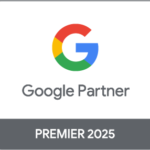Are you struggling to get the best results from your Google Ads campaigns? Many advertisers face challenges that keep them from effectively reaching their target audience and managing their budget.
One common issue is poor account and campaign structure, which often leads to wasted ad spend and low user engagement.
We get it; navigating Google Ads can be tricky. Improper setup or not optimizing key settings can dramatically affect performance. For example, incorrect geo-targeting settings might cause your ads to show up in places you didn’t intend, leading to a lower click-through rate (CTR).
In this article, we’ll go through ten common mistakes in Google Ads management and offer practical solutions for each one. Whether you’re misusing negative keywords or grappling with attribution models, we’re here to help.
Keep reading to discover how you can fine-tune your ads campaign for better outcomes!
Key Takeaways
- Structure your Google Ads account logically to avoid wasted ad spend and missed opportunities.
- Set precise geographic targets to ensure ads appear only where services are available, avoiding budget waste.
- Expand from a single shopping campaign to multiple ones over time for better budget and bid management.
- Use different attribution models to gain deeper insights into ad performance and what drives conversions.
- Add responsive display ads to increase visibility across diverse networks and devices by automatically adjusting their size and format.
Mistakes in Google Ads

One common mistake involves setting up a poor account and campaign structure. Another frequent issue is incorrect geo-targeting settings, which can waste precious ad spend.
Poor Account and Campaign Structure
A poorly structured Google Ads account can waste both time and money. Disorganized campaigns make it hard to track performance metrics. We should group similar ads together, ensuring that each campaign targets a specific audience or goal.
This structure helps us optimize our cost-per-click and quality score.
Using Real Estate and Remarketing Lists for Search Ads (RLSA) correctly is vital. Instead of creating separate campaigns for remarketing, we can integrate RLSA as an observation in general campaigns.
This allows us to adjust bids based on past interactions without managing multiple campaigns.
Effective campaign structure leads to better ad performance and higher ROI.
Incorrect Geo-Targeting Settings
Invalid geo-targeting settings can sink even a well-structured ad campaign. The default setting in Google Ads often causes ads to appear in unintended locations, wasting budget and reducing effectiveness.
We must fine-tune the location options to maximize relevance and ROI.
Adjustments need careful attention to detail in digital advertising campaigns. Setting specific geographic boundaries ensures our targeted ads reach the right audience, enhancing their impact.
Proper geo-targeting aligns with strategic planning efforts, improving cost per click and conversion rates.
We should monitor analytics regularly using Google Analytics or similar tools to verify that our ads display correctly within chosen areas. This vigilance helps maintain high performance of online marketing strategies and prevents costly errors related to poor targeting accuracy.
Running Only One Shopping Campaign
Relying on a single shopping campaign can limit our ability to target product categories effectively. New or small accounts might start this way, but expanding to multiple campaigns over time is crucial for better results.
With multiple campaigns, we can structure ad groups based on different brands or price ranges.
This approach also allows more precise bidding and budget allocation. Using Google Ads tools like the Keyword Planner will help in discovering relevant keywords for each campaign. This fine-tuning leads to improved search results and increased unique visitors, ultimately boosting conversions.
Not Analyzing Attribution Models
Attribution models play a crucial role in optimizing our Google Ads campaigns. These models help us understand the customer journey, impacting our decision-making process significantly.
Not analyzing them means we miss out on valuable insights available through Google Analytics or Google Ads settings. For instance, without this analysis, we might incorrectly attribute conversions to the last clicked ad rather than recognizing that multiple touchpoints contributed to the conversion.
We must examine different default attribution models like Last Click or Linear Attribution to grasp which ads and keywords drive results effectively. This examination helps refine our strategy by showing how users interact with various ads before converting.
Ignoring these insights can lead us to invest heavily in less effective campaigns while underestimating those that truly foster conversions. Accurate analysis ensures cost per conversion remains low and value proposition high, enhancing overall advertising media performance.
Not Utilizing Responsive Display Ads
Analyzing attribution models helps us understand user behavior, but ignoring responsive display ads limits our ad reach. Preference for static or HTML banners restricts the visibility of our campaigns.
Responsive display ads adapt to various formats and platforms on the internet, allowing more flexibility.
Using responsive display ads ensures higher engagement and wider reach. They automatically adjust size, appearance, and format based on available space. This increases our chances of attracting clicks from different devices and websites across Google’s network.
Integrating responsive display ads can significantly improve performance in e-commerce initiatives by reaching potential customers in diverse online spaces such as Facebook and LinkedIn.
Responsive display ads enhance overall campaign success through better optimization techniques like a/b testing. We can assess which versions perform best without constant manual changes.
This allows us to focus on other crucial elements like ad copy and keyword research, ensuring that each aspect of our advertising strategy works harmoniously towards achieving peak efficiency.
Misusing Negative Keywords
Misusing negative keywords can waste a lot of money in Google Ad campaigns. We often see marketers adding only exact match negative keywords, which limits the effectiveness. Instead, it’s crucial to include phrase or broad match negatives to catch more irrelevant search terms.
This reduces unwanted clicks and cuts down on costs.
Identifying repetitive phrases in search term reports is essential. By carefully examining these reports, we can spot patterns and add them as negative keywords. This step helps us focus our budget on high-quality traffic that converts better.
Misuse happens when this process gets neglected, leading to inefficiencies.
In order to optimize our ad performance, we should continually update our list of negative keywords based on new data from Google Keyword Planner or other tools like SEMrush. This proactive approach ensures ongoing improvements and cost savings in our ad campaigns without interruption leading us towards ensuring broader campaign reach through “Not Utilizing Responsive Display Ads.
Solutions to Avoid Mistakes

We should focus on correctly setting our geo-targeting options to ensure ads reach the intended audience. Using multiple shopping campaigns allows us to better promote various product categories, reaching more customers effectively.
Integrate RLSA as observation in general campaigns
Integrating RLSA (Remarketing Lists for Search Ads) as an observation in general campaigns can significantly improve targeting. This strategy enhances campaign efficiency and boosts returns.
- Enable RLSA as Observation: Activate RLSA in your ad settings to monitor how different audience segments interact with your ads without adjusting bids initially.
- Use Bid Modifications: Implement bid adjustments later based on the observation data collected by the RLSA. This allows us to target high-value customers more effectively, improving conversion rates.
- Avoid Separate Campaigns: Keep the RLSA within general campaigns instead of creating separate ones. This method leverages existing campaign structures and avoids unnecessary complexity.
- Monitor Performance Metrics: Regularly check key metrics like click-through rates (CTR), conversion rates, and cost-per-click (CPC) to understand how different segments perform, guiding us to better optimization decisions.
- Adjust Bids Based on Data: After gathering sufficient data, adjust bids for different remarketing lists to focus budget on audiences that are more likely to convert, leading to better use of advertising dollars.
- Use Ad Customizers: Incorporate dynamic ad customizers tailored for each segment identified through RLSA, making ads more relevant and personalized, which can increase engagement and conversion rates.
- Test Different Creatives: Experiment with various ad texts and creatives for different audience segments identified through the RLSA observations to find which combinations perform best.
- Leverage Historical Data: Analyze past performance data of observed audiences to forecast future trends and adapt our strategies accordingly, ensuring continuous improvement in campaign outcomes.
- Align with Marketing Goals: Ensure that adjustments made based on RLSA data align with overall marketing goals such as increasing sales or boosting brand awareness, maintaining a cohesive approach across all campaigns.
- Compliance Considerations: Pay attention to privacy regulations when managing remarketing lists and collecting user data, ensuring that practices comply with laws like GDPR or CCPA while maintaining user trust.
Change geotargeting settings in Google Ads
Adjusting geotargeting settings in Google Ads can significantly improve ad relevance and performance. This ensures ads appear specifically in intended locations for maximum impact.
- Access Location Options
Navigate to the settings tab in your Google Ads account. Click on “Locations” to access geotargeting options. This allows us to see where our ads are currently being shown.
- Choose the Right Target Locations
Select specific countries, regions, or cities where we want our ads to be displayed. Ensure that we are targeting areas relevant to our business goals and audience demographics.
- Exclude Unwanted Locations
Identify and exclude locations where we do not want our ads to appear. Use the “Exclude” option to filter out irrelevant geographic areas, ensuring that ad spend is focused on high-potential markets.
- Use Advanced Location Options
Under the location options, select “People in or regularly in your targeted locations.” This ensures that only individuals physically present or frequently visiting specified areas see the ads, boosting relevance.
- Analyze Performance Data by Geographic Area
Regularly review performance data segmented by location in Google Ads reports. This helps us identify which areas yield the best results and adjust targeting strategies accordingly.
- Leverage Geo-Fencing Techniques
Implement geo-fencing techniques by drawing a virtual perimeter around specific locations using tools like Google Maps integration within Google Ads. This hyper-targets customers within a defined radius, enhancing local marketing efforts.
- Update Location Extensions for Local Relevance
Add location extensions to display business addresses alongside ads for local search queries like “car repair near me.” This can increase foot traffic and improve click-through rates (CTR).
- Test Different Geo-Targeting Strategies
Experiment with different geographic segments and monitor their performance over time. Split testing various regions can help determine which markets respond best to our ecommerce advertisements.
Effectively managing geotargeting settings optimizes ad delivery and maximizes return on investment (ROI).
Expand to multiple shopping campaigns over time
Changing geo-targeting settings in Google Ads can bring much-needed precision to your campaigns. Now, let’s discuss why expanding to multiple shopping campaigns over time is essential.
- Allows Gradual Scaling:
Start with one shopping campaign for new or small accounts.
- This approach helps manage initial budgets effectively.
- It ensures you understand how your products perform before scaling up.
- Better Product Categorization:
Target different product categories more accurately as you expand.
- Create distinct campaigns for various segments like electronics, clothing, or accessories.
- Tailor bids and ads based on the performance of each category.
- Enhanced Budget Allocation:
Distribute budgets according to the needs of different shopping campaigns over time.
- Focus more spend on high-performing categories.
- Reduce wasteful expenditure on underperforming segments.
- Improved Performance Analysis:
Analyze each campaign’s performance individually.
- Identify strengths and weaknesses within specific product lines.
- Adjust strategies based on factual data instead of assumptions.
- Greater Flexibility in Bidding:
Implement different bidding strategies for multiple campaigns.
- Use higher bids for profitable products to capture more traffic.
- Opt for conservative bids where necessary to stay within budget limits.
- Target Specific Audiences More Effectively:
Reach unique customer groups through tailored campaigns.
- Customize ads based on buyer demographics and interests for each product category.
- Utilize retargeting to convert visitors into buyers efficiently.
- Easier Management and Optimization:
Manage smaller, focused campaigns rather than a single extensive one.
- Make quick adjustments without impacting other categories’ performance negatively.
- Optimize each campaign independently for better results.
Expanding to multiple shopping campaigns provides the flexibility and control needed to succeed in Google Ads.
Examine different default attribution models
After expanding to multiple shopping campaigns, it’s crucial to examine different default attribution models. Understanding these models helps us make better decisions and optimize our Google Ads.
- First Click Attribution
This model gives credit to the first interaction in the customer journey. Using this model can help us understand what attracts users initially.
- Last Click Attribution
Last Click focuses on the final interaction before a purchase. This model shows which ads close the sale and drive conversions.
- Linear Attribution
Linear spreads credit equally across all interactions. We get a balanced view of how each touchpoint contributes to the conversion path.
- Time Decay Attribution
Time Decay assigns more credit to interactions closer to the time of conversion. This approach helps highlight recent efforts that impacted the sale.
- Position-Based (U-Shaped) Attribution
Position-Based gives 40% credit each to the first and last interactions, with 20% spread across middle interactions. It’s useful for understanding both initial attraction and final conversion drivers.
- Data-Driven Attribution
Data-Driven uses machine learning to allocate credits based on actual data from our account. This model adapts over time as it learns from user behavior patterns.
Using these models, we can analyze data through Google Analytics or Google Ads interfaces, gaining deeper insights into our customers’ journeys and improving ad performance based on informed choices.
Use responsive display ads to increase reach
In our Google Ads strategy, examining different attribution models helps identify what drives conversions. Next, we focus on using responsive display ads to increase reach.
- Create Flexible Ads: Responsive display ads adapt to fit various ad spaces and formats. This flexibility ensures your ads always look appealing, whether on a desktop or mobile device.
- Boost Ad Reach: These ads significantly increase our reach by automatically adjusting in size, appearance, and format to fit available ad spaces. Diverse placements mean more potential customers will see our adverts.
- Enhance Performance: Using responsive display ads can enhance campaign performance and visibility. The automatic adjustments ensure optimal delivery across the Google Display Network.
- Save Time and Effort: We save time by not needing to design separate ad variants for each placement. Google Ads does the heavy lifting by creating combinations from headlines, descriptions, and images we upload.
- Leverage Google’s Machine Learning: Google’s algorithm tests different combinations of our assets to find the best-performing ones. This data-driven approach increases engagement and improves conversion rates.
- Expand Reach with Less Work: Instead of running multiple campaigns with static banners, responsive display ads allow us to cover more ground efficiently without diluting our efforts or budget.
- Optimize for Keywords like ‘landing page’ and ‘call-to-action’: Responsive display ads support keywords that drive actions, such as “landing page” and “call-to-action.” These elements are crucial for targeting users effectively.
- Increase High-End Visibility: By utilizing responsive display ads, our high-end products gain more visibility among targeted audiences across numerous websites within the Google Display Network.
Identify and add negative keywords in phrase or broad match
Identifying and adding negative keywords in phrase or broad match can significantly improve your Google Ads campaign. This step helps reduce irrelevant traffic and lower costs.
- Check Search Term Reports: Examine search term reports to spot repetitive phrases that do not lead to conversions. These phrases should be added as negative keywords.
- Reduce Unwanted Clicks: Identify terms that attract the wrong audience. Adding these as negative keywords will avoid wasting budget on irrelevant clicks.
- Use Phrase Match Negative Keywords: Add specific, non-converting phrases in phrase match format to ensure they don’t trigger ads.
- Incorporate Broad Match Negative Keywords: Use broad match for more general terms that are consistently unproductive, eliminating a wider range of unwanted traffic.
- Regularly Update Negative Keywords List: Conduct frequent reviews of your keyword lists to keep them updated with new negative keywords from recent data.
- Leverage Keyword Planner: Utilize tools like Google’s Keyword Planner to find new terms that could be potential negative keywords based on their low relevance to your goals.
- Monitor Ad Performance Metrics: Keep an eye on key performance indicators (KPIs). High bounce rates or low engagement might indicate the need for additional negative keywords.
- Exclude Competitor Terms Cautiously: Sometimes, excluding competitor names can save costs; just ensure it fits within your broader strategy.
Adding negative keywords accurately ensures we maximize our ad spend efficiency while targeting the right audience effectively.
Solutions to Avoid Mistakes
Conclusion
### Poor Account and Campaign Structure
We should start by focusing on how we organize our Google Ads accounts. A disorganized account can lead to wasted ad spend and missed opportunities. We need to make sure our campaigns are set up logically, with clear objectives and targeted keywords.
### Incorrect Geo-Targeting Settings
Setting the right geographic targets is crucial for successful ad campaigns. If our ads show in areas where our services are not available, we waste money. Checking geo-targeting settings helps us ensure that ads appear only in relevant locations.
### Running Only One Shopping Campaign
Relying on a single shopping campaign can limit our reach. Different products may require different strategies, so it’s smart to diversify into multiple campaigns over time. This approach allows us to better manage budgets and bids for each product type.
### Not Analyzing Attribution Models
Using the correct attribution models is vital for understanding which ads perform best. We should examine various default models rather than sticking to one option. Doing so grants us deeper insights into what drives conversions.
### Not Utilizing Responsive Display Ads
Ignoring responsive display ads means we miss out on increased visibility across diverse networks and devices. These adaptable ads automatically adjust their size, appearance, and format to fit any space available within Google’s network of websites.
### Misusing Negative Keywords
Errors in using negative keywords can result in lost opportunities or wasted clicks from irrelevant searches. It’s essential that we identify common phrases through search term reports to add as negative keywords accurately.
By addressing these mistakes proactively, we’ll maximize the effectiveness of our Google Ads efforts while minimizing wasteful spending.
FAQs
1. What are some common mistakes to avoid with Google Ads?
Common mistakes include poor landing pages, weak call to action, and improper goal settings.
2. How can we improve our landing pages for better performance?
We should ensure that our landing pages are fast, user-friendly, and contain relevant information matching the ad content.
3. Why is having a strong call to action important in Google AdWords?
A strong call to action guides users on what steps to take next, increasing the chances of conversion from our ads.
4. How does setting clear goals help in running effective Google Ads campaigns?
Clear goal settings allow us to track progress accurately and make informed decisions based on data from Google Search analytics.











